15 Cleaning Products You Should Keep Far from Your Kids
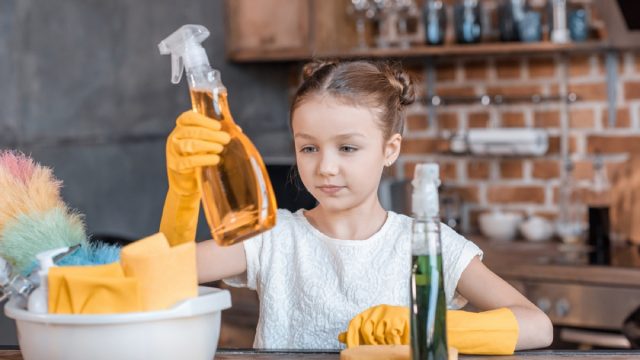
Kids have a way of getting into everything, from the closet where you’ve been hiding their birthday presents to that not-so-secret candy stash you’ve kept tucked away in the kitchen. Mostly, a child’s curiosity is harmless. But, when it comes to household cleaning products, a single misstep could have tragic consequences. So, before you accidentally expose your little ones to something that could land them in the E.R., read on to discover which cleaning products you should always keep far away from your kids.
1
Bleach
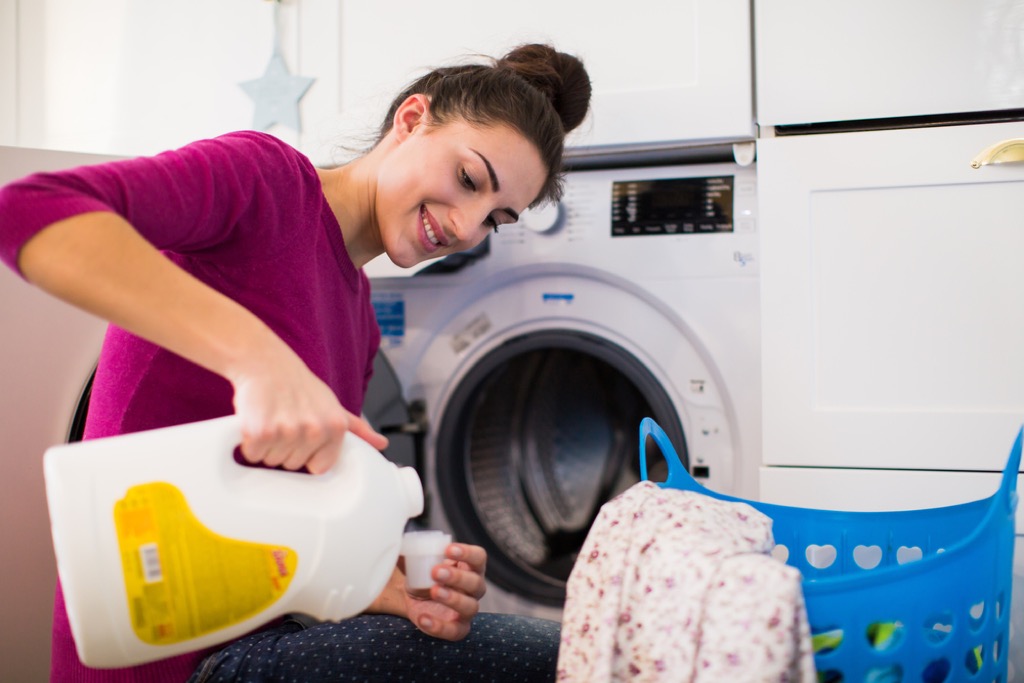
Whether you use it to sanitize your bathroom or get your whites sparkling white, bleach is one household cleaner you should always keep far out of your children’s reach. According to a 2010 study conducted in Pediatrics, bleach is the cleaning product that causes the most injuries in children, with ingestion being the primary means of injury. Though any amount of bleach that gets on your skin can cause burns, ingesting the stuff can also cause vomiting, damage to internal organs, internal bleeding, and, in extreme cases, even death.
And while bleach on its own is dangerous to kids, combining it with other cleaning products intensifies its effects—when mixed with ammonia, bleach creates chloramine gas, which can cause irritation to the respiratory tract, difficulty breathing, vomiting, fluid in the lungs, and even death with prolonged exposure. When mixed with alcohol, bleach can create chloroform, which can cause respiratory issues, as well as organ and central nervous system damage, and when combined with vinegar, potent chlorine gas, which can cause similar health issues, is formed.
2
Glass cleaner
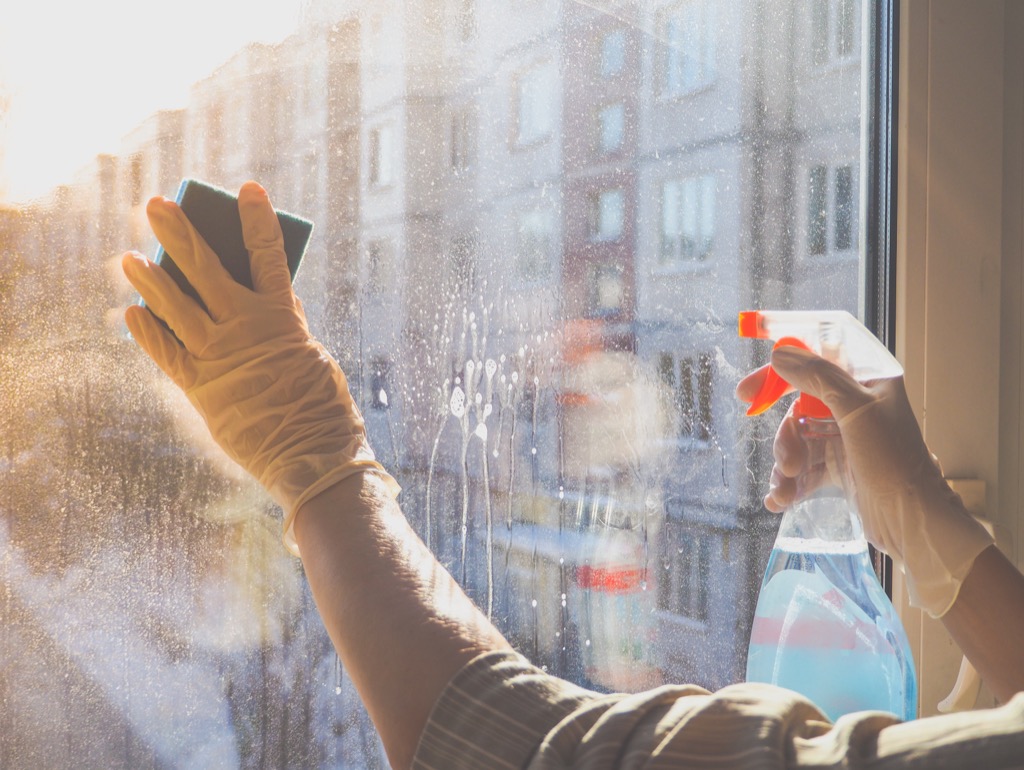
If your kids are eager to help clean your windows, great! Just make sure you’re doing so with some good old-fashioned vinegar-and-water mix and not traditional glass cleaner. Many glass cleaners contain ammonia, which the CDC lists as the second-most-likely substance to cause injury in children. And it’s not just ingestion that can present a danger with ammonia—even when breathed in, ammonia can cause burning of the eyes, nose, and throat, lung damage, blindness, or even death, and even direct contact between ammonia and skin can cause burns.
3
Multipurpose cleaner
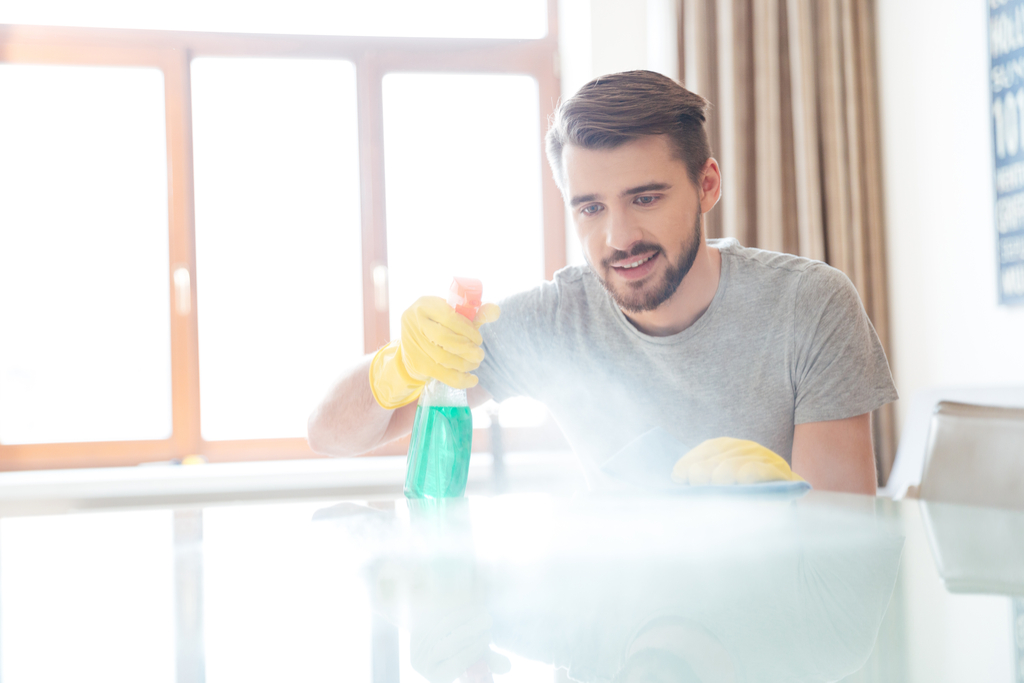
That multipurpose cleaner has no place around your kids. Many multipurpose cleaners are made with ammonia, which can cause serious health risks when inhaled, ingested, or splashed on skin.
4
Toilet bowl cleaner
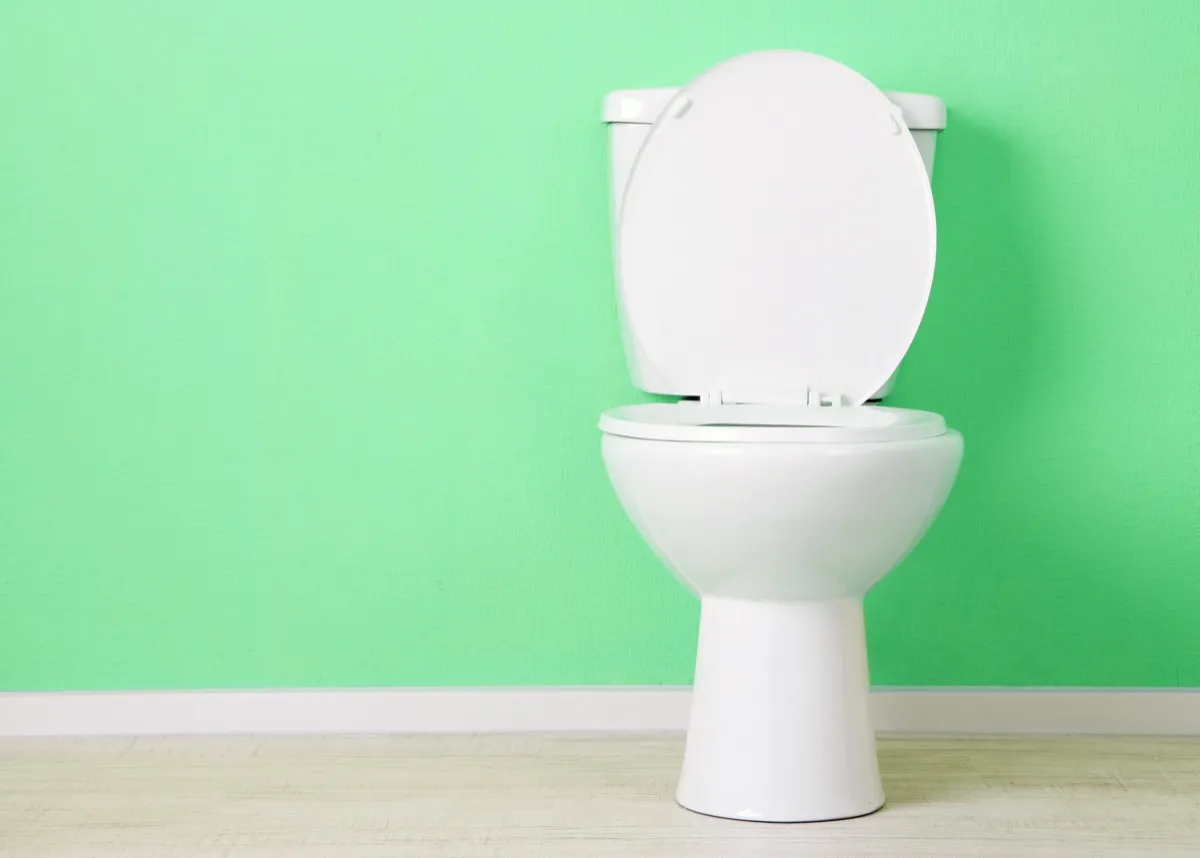
Toilet bowl cleaner can be a particularly dangerous substance to keep around little kids. Toilet bowl cleaner is often made using ammonia or hydrochloric acid, the latter of which can cause serious chemical burns and may even be fatal if ingested. Some toilet cleaners—especially the brightly-colored ones meant to sit in your tank or bowl—can look also particularly appealing to kids, who may mistake them for a treat.
5
Oven cleaner
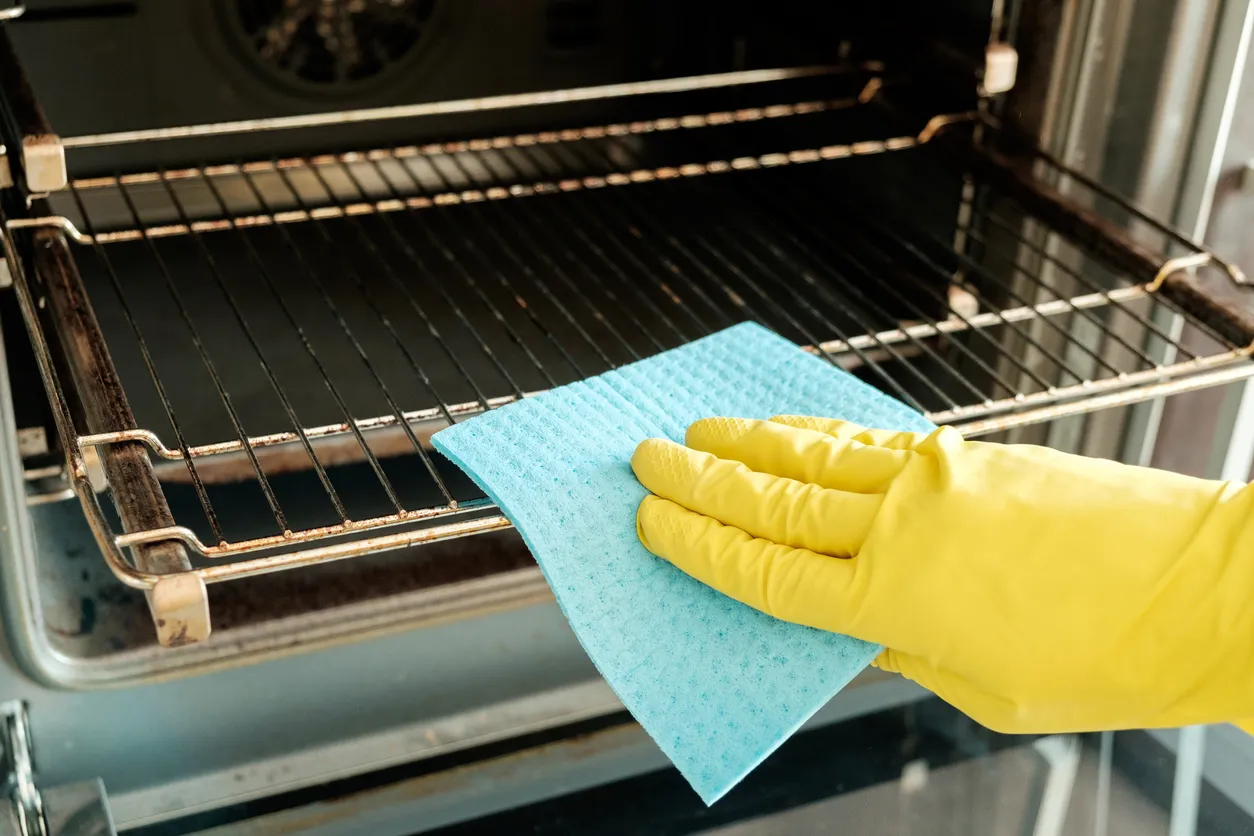
There’s a reason oven cleaner can get years’ worth of built-on grime off the inside of your stove: it’s pretty powerful stuff. And since most formulas are made using ammonia, it’s crucial you keep it far from where little hands might reach it.
6
Drain cleaner
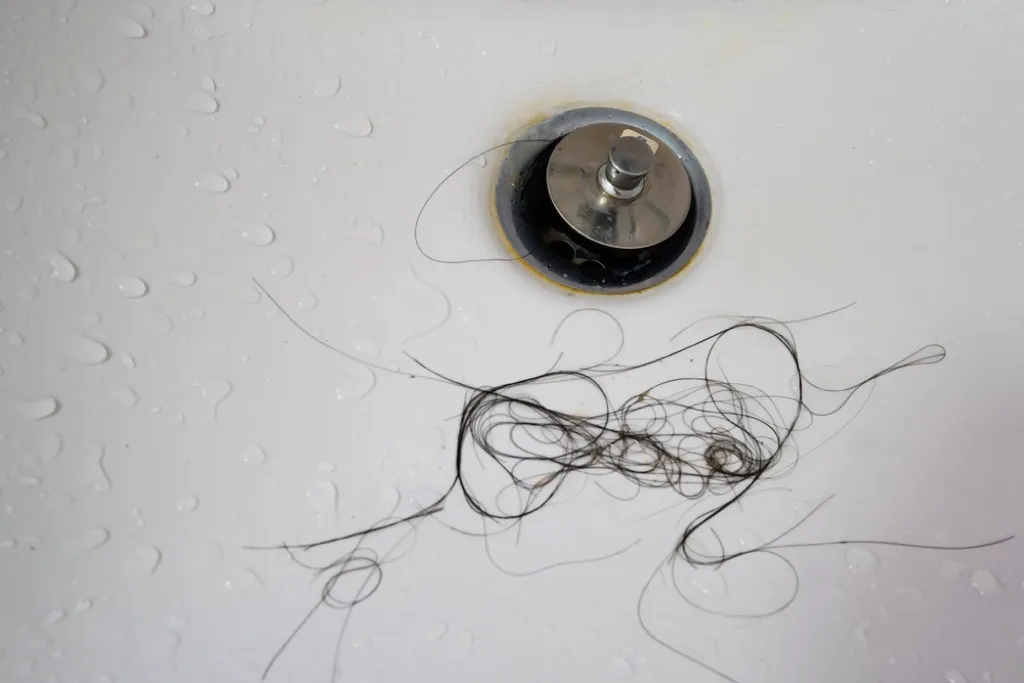
It’s powerful enough to purge a frightening hairball out of your drain, it’s definitely powerful enough to do some serious harm to a human—especially a small one. Drain cleaners are frequently made with ammonia, as well as sulfuric acid and lye, both of which can cause serious burns, nausea, vomiting, respiratory distress, blindness, and death.
7
Soap scum remover

If you’re trying to get your tub clean with a traditional soap scum remover, make sure your kids aren’t anywhere near where you’re doing that dirty work, since most soap scum removers have ammonia as a main ingredient. Fortunately, a mixture of equal parts vinegar and dish soap can get rid of that ring around the tub without the potentially harmful effects.
8
Pool cleaner
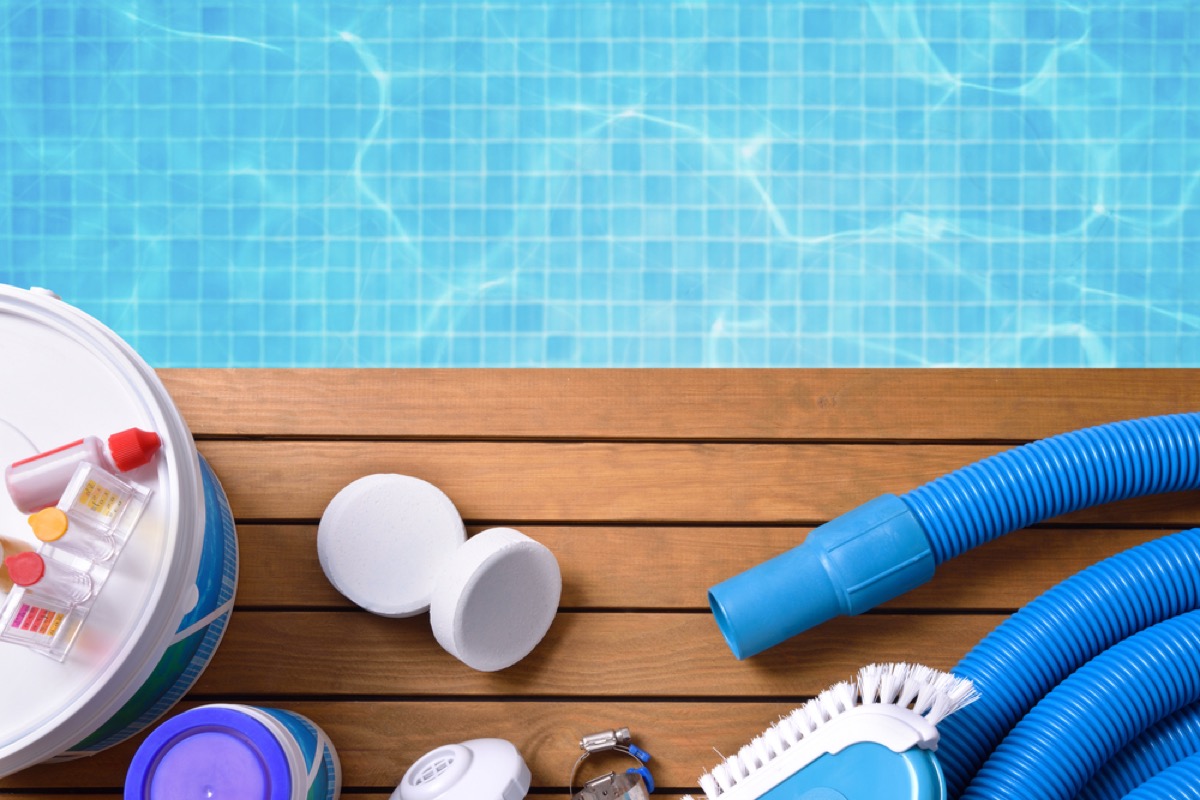
Most parents know that swimming pool safety—from installing adequate fencing to using personal flotation devices on inexperienced swimmers—is paramount. However, some may not realize just how dangerous the chemicals used to keep that pool clean can be. Pool cleaner frequently contains hydrochloric acid, which can cause serious chemical burns, blindness, organ damage, and even death.
9
Grout cleaner

Getting your grout clean can be a dangerous proposition if you’re not careful—especially if you have kids. Many grout cleaners are made using hydrochloric acid or sulfamic acid, the latter of which can cause burns, vomiting, damage to the eyes, breathing trouble, and death.
10
Dishwasher detergent
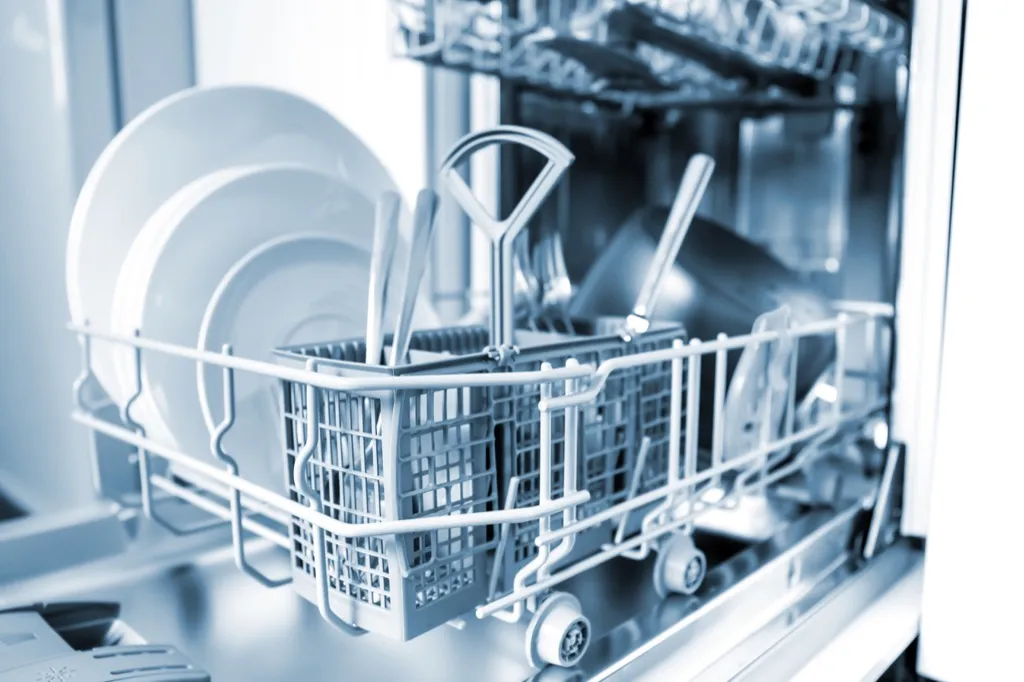
Get your dishes clean and keep your kids safe by stashing your detergent where your little ones won’t have access. Dishwasher detergent frequently contains bleach, and many formulas are made using chlorine, which can cause respiratory distress, as well as serious eye and skin irritation.
11
Mildew remover
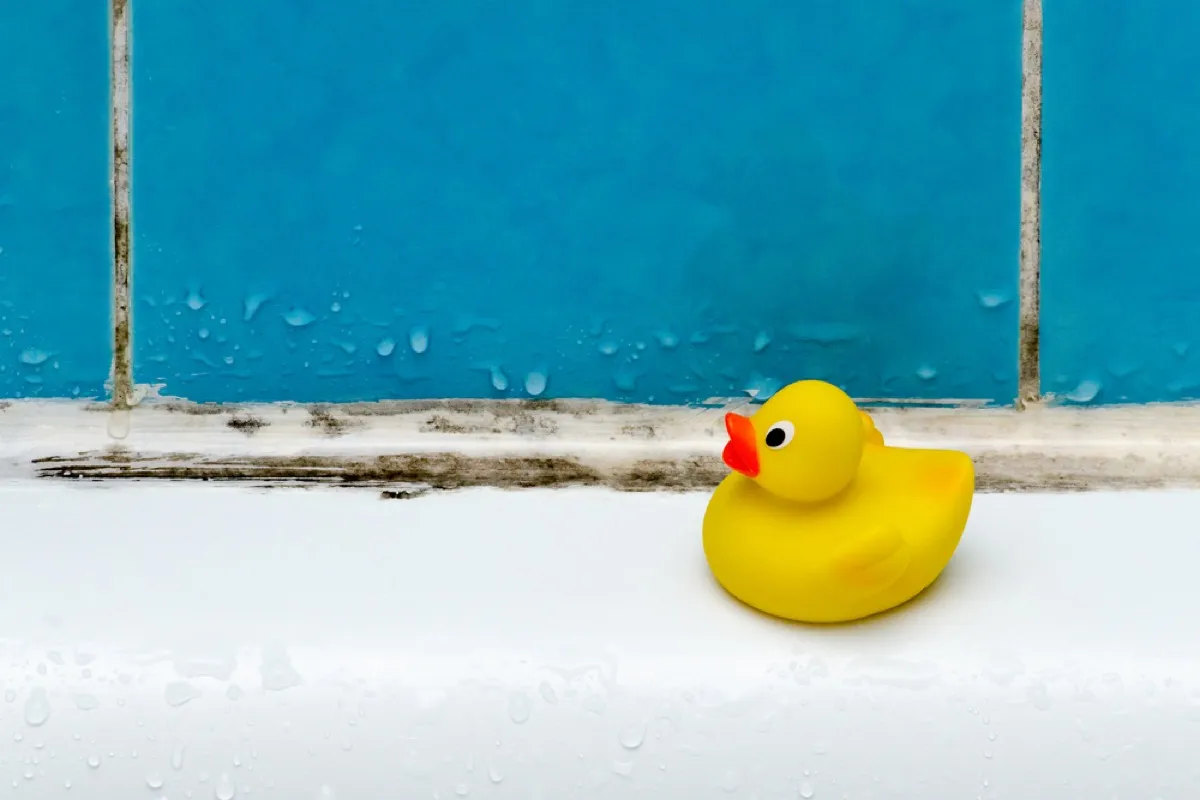
Unfortunately, standard-issue mildew remover could present serious health risks to kids, as it frequently contains potentially-dangerous chlorine. If you need to get mildew off your surfaces, a kid-safe mixture of vinegar and water can do the trick.
12
Rust blocker
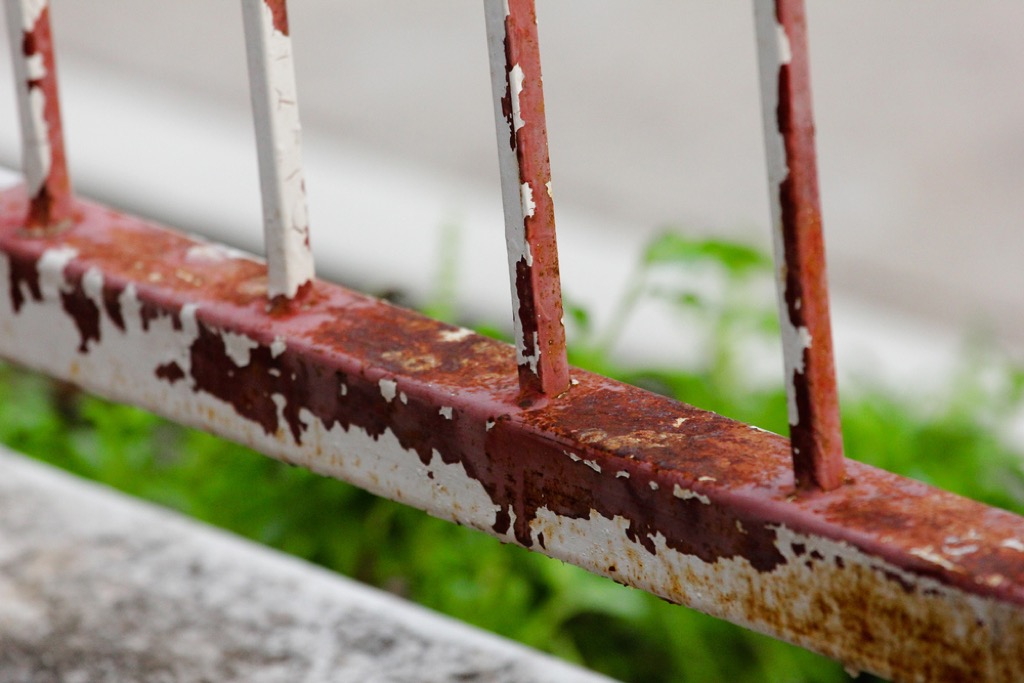
If it can get keep rust from forming, that rust barrier can definitely do some serious damage to you and your kids, too. Rust removers often contain phosphoric acid, which, at low levels is safe enough to consume, but in higher concentration can prove dangerous. In certain cleaning products, the phosphoric acid concentration may be high enough to cause burns, eye irritation, vomiting, and breathing problems.
13
Computer duster
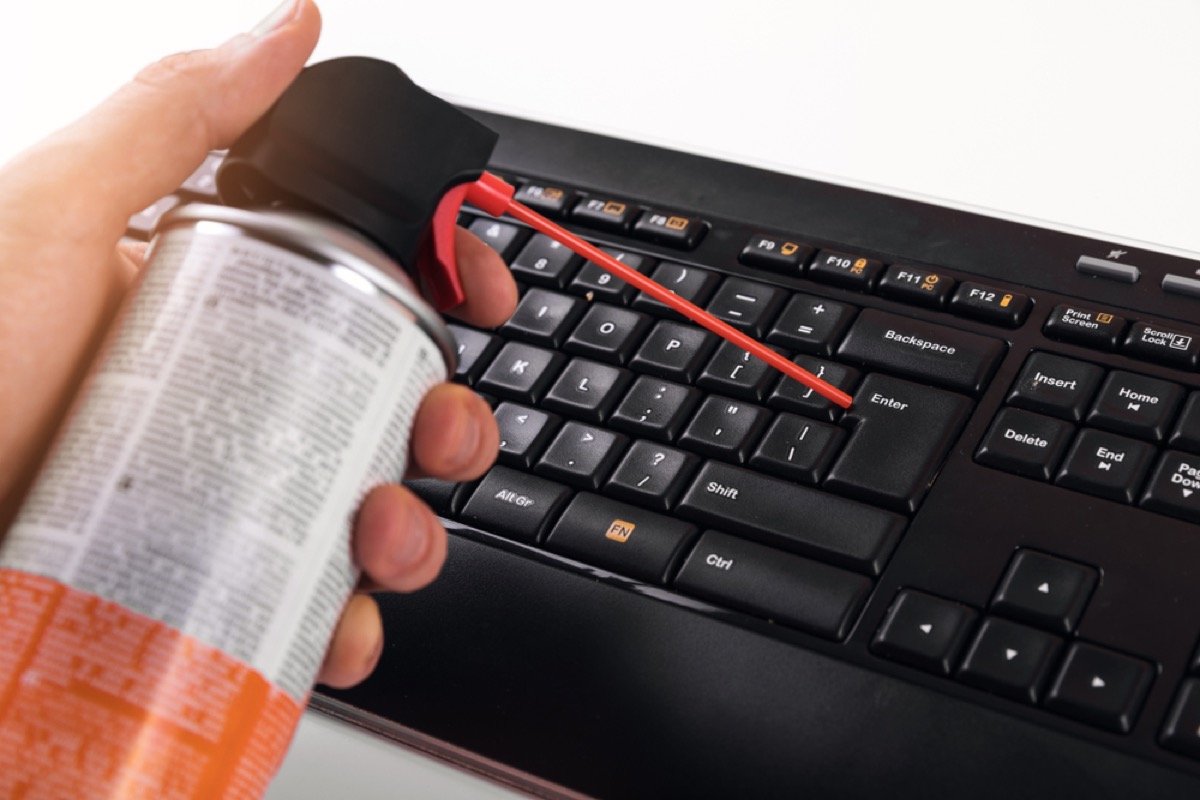
That can of computer duster may be fun to use, but letting your kids play with it is a major misstep. Compressed air can cause frostbite if sprayed directly onto skin, and can become addictive (and contribute to serious health issues, including organ failure) if intentionally inhaled. And for more surprising habits you could get hooked on, discover these 17 Things You Didn’t Know You Could Be Addicted To.
14
Detergent pods
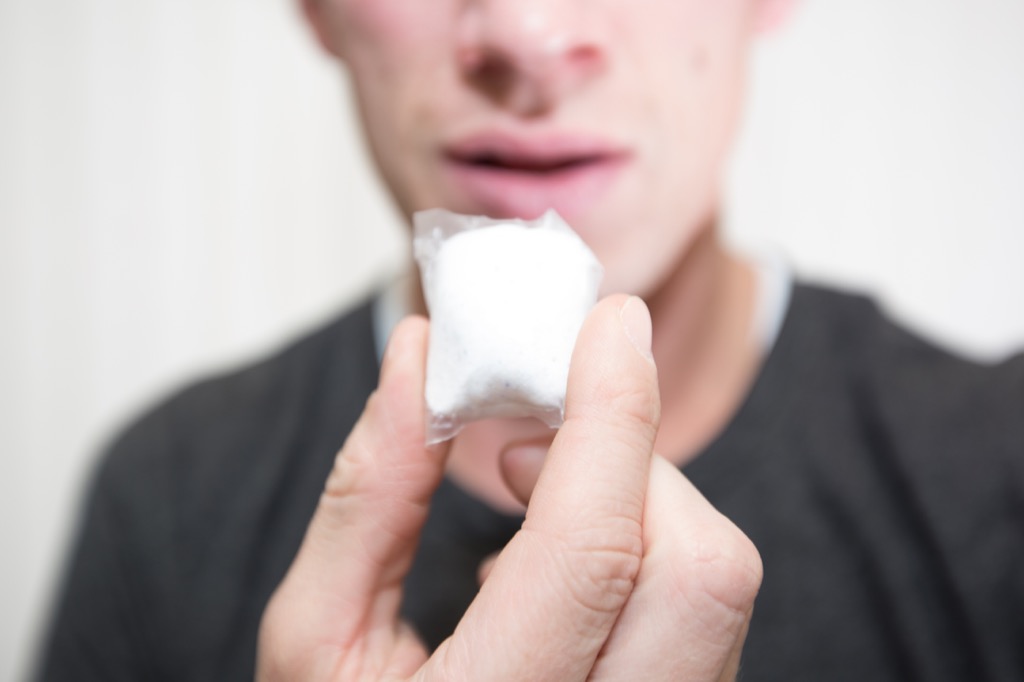
Unless you want your kids to be the latest ones hospitalized for trying the notorious Tide Pod Challenge, it’s wise to keep your detergent pods out of reach. Eating detergent even has a body count: according to one report, eight people died from eating detergent pods between 2012 and 2017, and countless others have been hospitalized.
15
Floor cleaner
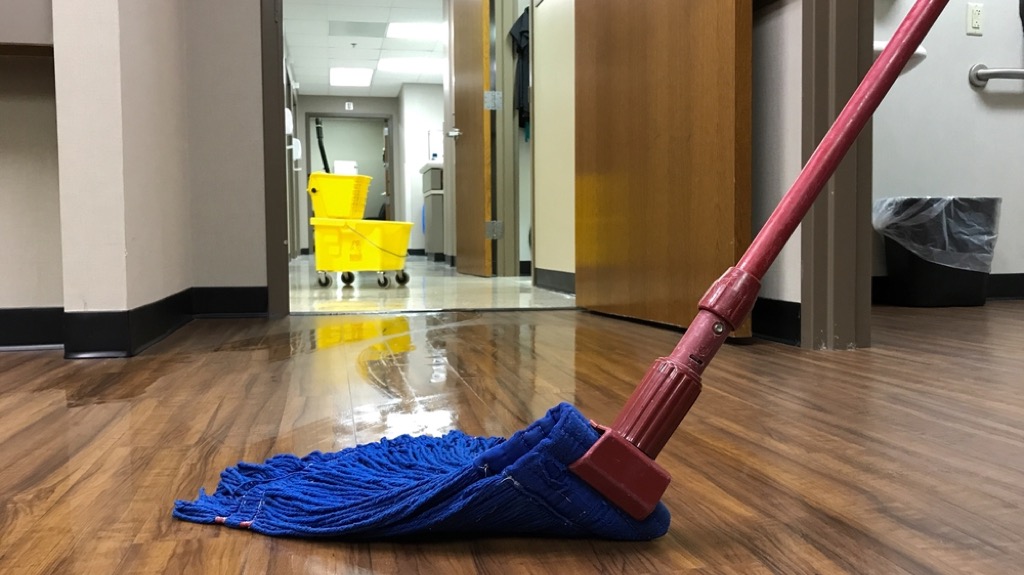
It makes your floors shine, but that bottle of floor cleaner can also make your kids seriously sick. Many floor cleaners contain ammonia, and polyurethane-based floor polish can release volatile organic compounds (VOCs), which can cause irritation of the eyes, lungs, digestive tract, and central nervous system; some have even been linked to cancer. And to make your chores a snap, make stock up on these 20 Products That Make Cleaning So Much Easier.
To discover more amazing secrets about living your best life, click here to follow us on Instagram!